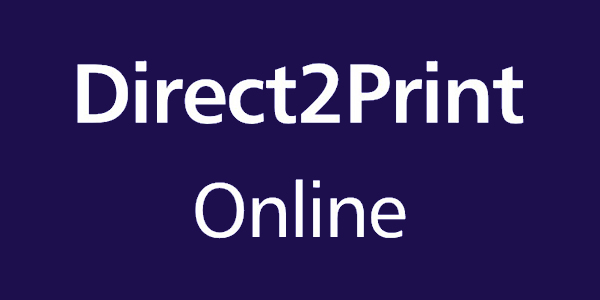Artwork Guidelines
File Types
We accept many types of files. PDF is preferred. There are a number of websites that offer a free download of a PDF creator. This then becomes another “printer” option you can select when saving your artwork. Whilst we do accept files from Microsoft Office applications (Word, PowerPoint etc.), we cannot guarantee the desired output. However, with digital printing we can print files created in both RGB and CMYK format.
PDF Options
Make sure all objects, such as fonts and pictures, are embedded in the PDF. Flattening layers reduces the size of your PDF. Save the artwork actual size and just set one-up – we can layout and paginate prior to printing. Try and leave a “quiet area” with no text or logos within about 5mm of the edge of each page.
Bleed
Bleed should always be added (ideally between 3-5mm) where artwork is designed to meet the edge of the page – also ‘Crop Marks’ would help to ensure the job is cut-down accurately. If your artwork meets the edge of the page but has no bleed we may cut 1mm into your job. Bleed and crop marks are not necessary if your artwork does not meet the edge of the page.
Font Size
Font sizes below 8pt can become difficult to read. 10-11pt is recommended for most documents or ‘body text’. Consider good colour contrasts when designing to make text as clear and legible as possible.
Picture Resolution
Image files or photographs should ideally be 300dpi. Images taken from web pages are usually of a lower resolution – and although they may look good on a screen they may be pixelated when printed. Pictures and colours created in Microsoft programmes tend to print darker than they appear on screen. Try and lighten the contrast before saving as a PDF.
Proofing
A free printed proof can be supplied if requested. With digital printing this will match the finished printed product because the file is stored in our machine’s memory.
Colour Matching
Every printing press is different and colour can even vary between runs of the same artwork. We calibrate the machine regularly and therefore there may be some difference in colours if jobs are ordered at different times. However, we will attempt to match colours if a suitable sample is supplied or we receive your instructions prior to printing.
File Size
Files should be as small as possible without compromising on quality. Files larger than 20mb may not go through our email system. In cases such as this, send your file through one of the free file transfer services available online – such as www.WeTransfer.com.
Templates
Compliment Slip Template
Business Card Template
A6 Template
A5 Template
A4 Tri-Fold Template
A4 Template
Things To Avoid
Try to avoid using borders in your designs, especially for double-sided artwork. It is difficult to register both sides perfectly and there is often a small amount of movement when paper and card travels through the press. Be aware that your border may not be consistent throughout the finished product.
Try to avoid using large areas of overly dark colours. This makes for high toner coverage which may result in the surface print buckling or curling or, particularly in double-sided print, pages sticking together.
Finally, remember we have a graphic designers at hand and we would be delighted to assist you in preparing your files for printing. This service is free and if we have to make amendments to your designs the cost will be extremely competitive and usually well worthwhile.
